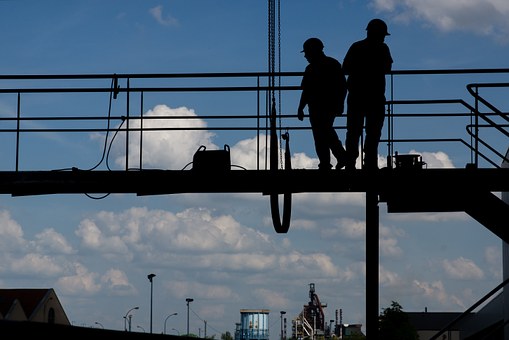Dropped objects do not just pose a hazard to workers and other people on the ground, but also those working at height. Workers can fall when a tool drops and they reach out to catch it.
Dropped objects can also result in financial losses. These can be due to damage caused by the falling object as well as lost productivity resulting from stopped work. Therefore a tethering policy should be implemented.

There are three steps in choosing the appropriate tethering product:
What is the weight of the tool?
Lighter tools weighing less than 2lbs should use tethers that can be attached to the individual. These may be attached to belts or harnesses and have retractable tethers, or be attached to their wrist.
More substantial tools weighing up to 25lb should have a tether that is attached to a structure using an anchor strap. These allow the tools to be used within a specified working radius while still ensuring that they remain secured.
Will the tether be used for single or multiple tools?
If only a single tool needs to be secured, you can use a fixed lanyard system. Otherwise, you should use a clip system or lanyard that can quickly be released so that you can easily change tools.
What is the attachment point?
If the tool has a lanyard, you can attach the tether to it or attach a ring to the lanyard. You can also use shrink wrap to connect rings to tools with small ends. For tools with large ends, you can loop the lanyard around it, and then cinch it tightly so it will be secure.
If there is no way to attach a tether to the tool, then you will have to get a custom tethering solution for it.
Here are some of the best practices that must be followed for personal tool tethering.
- Make sure that the tether you use is rated for the tool you will attach it to. If you are unsure of the tool’s weight, weigh it to be sure. Never try to estimate the weight just through feel.
- Make sure that you confirm the integrity of the tether through visual inspection and testing. Don’t use tethers that seem to have excessive wear.
- Make sure that the attachment point is strong enough to support the tool in case it drops.
- Make sure that the tether has very low stretch force when it is at full extension. This is to avoid accidents since a tether with high stretch force may still cause injury if the tool hits a person.
- Make sure that tools weighing over 10lb are anchored to a structure, and not a person. This is to avoid accidental falls in case the tool is dropped.
- If you are using multiple tethers, use ones with retractable lanyards to ensure that they don’t get entangled.
- Whenever possible, make sure you transfer shock loads to a structure rather than a person.
- Only use the tether as is without modifying it in any way. Modification may threaten the integrity of the tether and make it less effective in case a tool is dropped.
- Don’t use hardware with the tether that does not have the proper load ratings. For instance, do not use keychain rings as attachment points, since these can only handle weights of around 1lb.
- Don’t use tethers in situations where there is a risk they may become entangled in machinery. These tethers are not designed to be breakaway in case of accidents.
- If you tether a tool to a structure, make sure that it is strong enough to not break in case the tool is dropped.
- Avoid using tethers that require too much force to fully extend, since these will cause worker fatigue, reduced productivity, and potential muscle injury.
- Don’t take the tether for granted. You should not automatically assume that it is foolproof in case a tool is dropped.
- If you tether a tool to a worker, make sure it does not adversely affect their personal fall protection equipment.






